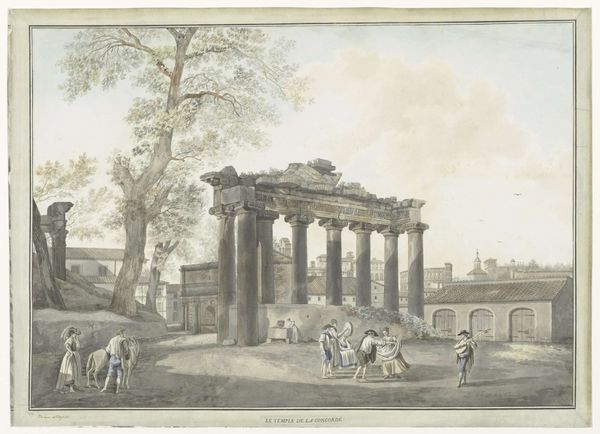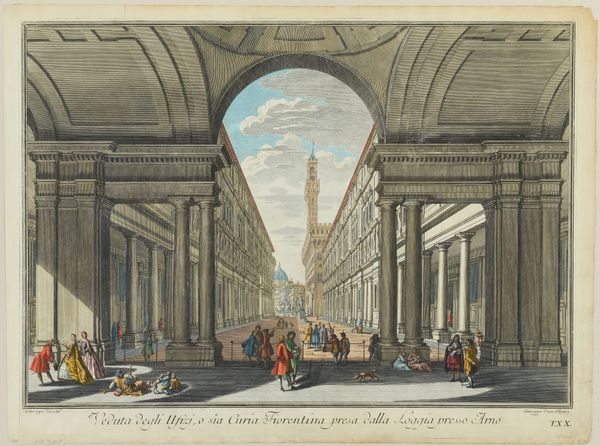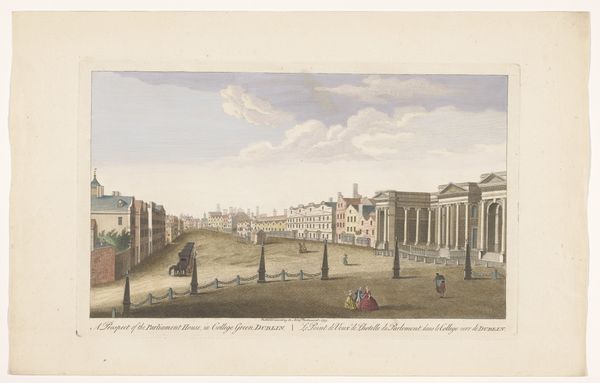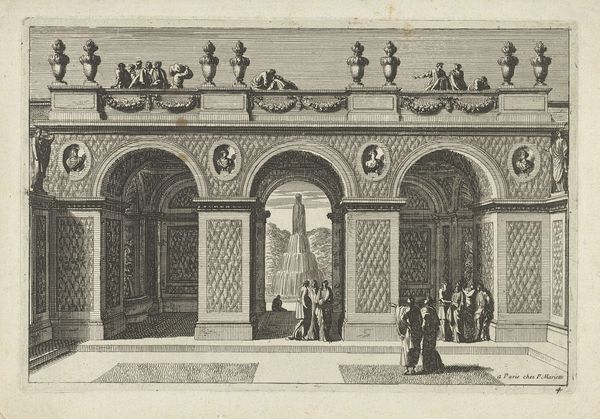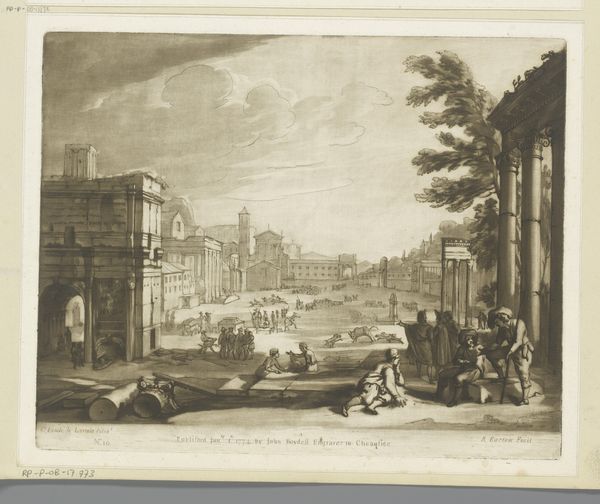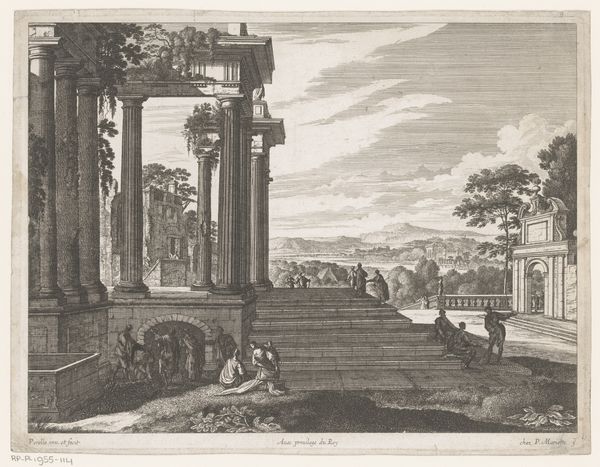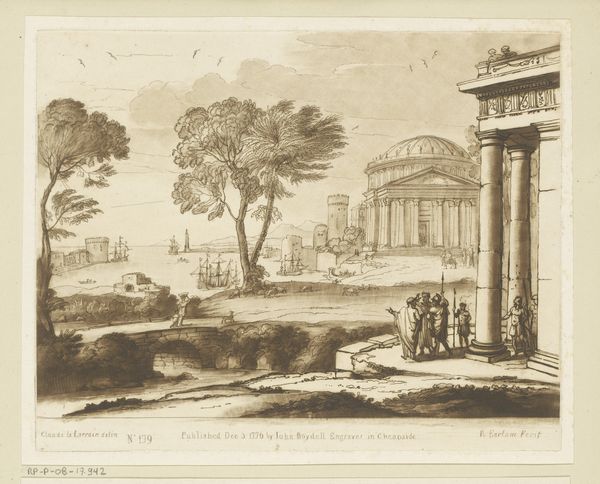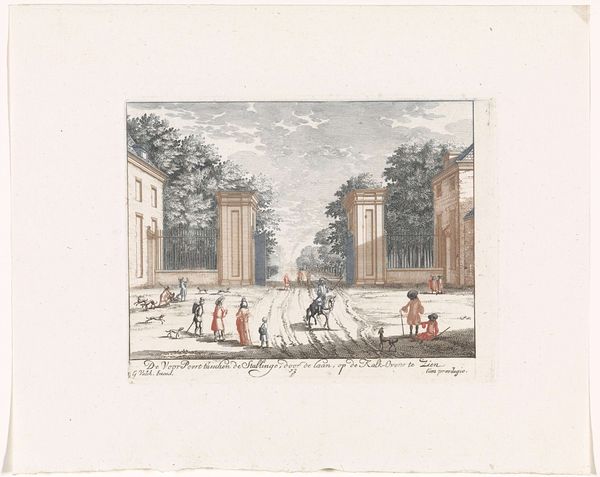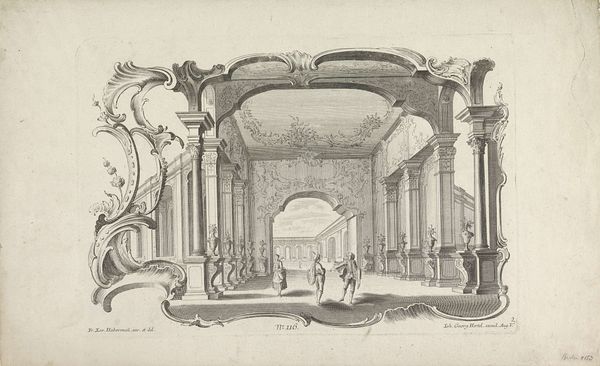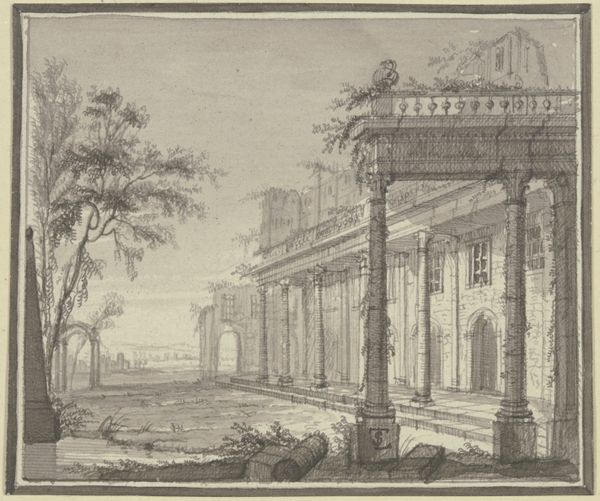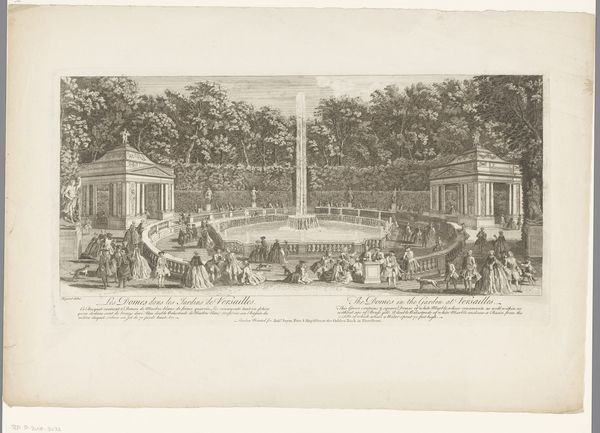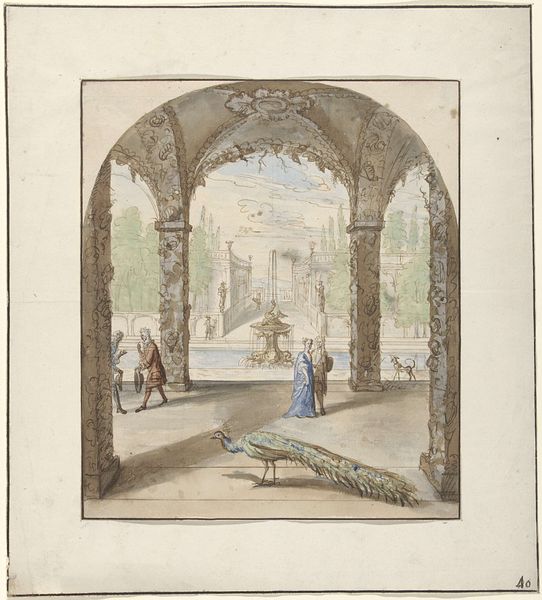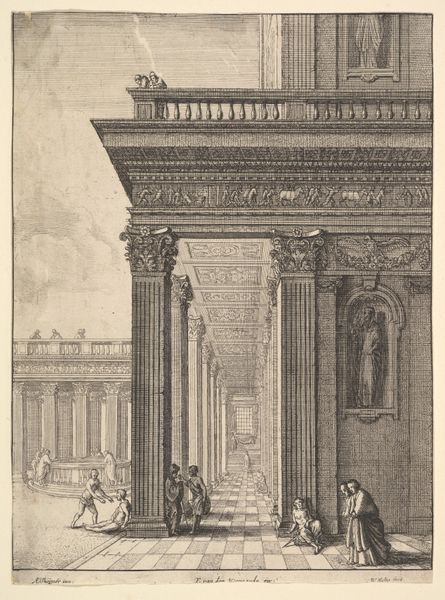
drawing, tempera, watercolor
#
drawing
#
garden
#
neoclacissism
#
tempera
#
landscape
#
watercolor
#
watercolour illustration
#
watercolor
Dimensions: height 510 mm, width 735 mm
Copyright: Rijks Museum: Open Domain
Editor: So, here we have Giovanni Volpato's "View of the gardens of the Villa Medici in Rome," likely from between 1758 and 1803, rendered in tempera, watercolor, and drawing. There's a hazy, almost dreamlike quality to it, with these grand architectural elements framing people strolling around. It makes me wonder, what stands out to you in this piece? Curator: The interesting aspect to me is the juxtaposition of high and low. We see the opulence of the Villa Medici—obviously signifying wealth and power—but Volpato employs materials like watercolor and tempera, commonly associated with preparatory sketches or amateur artmaking rather than "finished" masterpieces. Why this choice? Was it simply expediency, or something more? Editor: Interesting... you mean like, the accessibility of those materials is at odds with the aristocratic subject matter? Curator: Precisely. Consider the labor involved in both creating and consuming this image. The scene depicts leisurely strolls, a lifestyle enabled by the exploitation of labor elsewhere. Yet, Volpato himself engaged in labor—mixing pigments, applying washes—activities with a very different kind of social currency than those of his subjects. It complicates any simple reading of Neoclassical idealism. Are we meant to aspire to this world, or critique its very foundations? Editor: That makes me think about how the production of the materials themselves also impacts the image. Where did Volpato source his pigments, his paper? Curator: Exactly! And who produced them? Were there exploitative labor practices in their production? By centering the materials, we're forced to confront the entire economic and social network underpinning this seemingly idyllic scene. The delicate washes belie a complex web of power relations. Editor: I hadn't thought about the artwork that way before, about questioning the systems behind the finished product, thanks! Curator: It’s a vital aspect to consider when approaching art history. Examining materiality encourages us to look beyond aesthetic appreciation and engage with the larger context of creation and consumption.
Comments
No comments
Be the first to comment and join the conversation on the ultimate creative platform.
